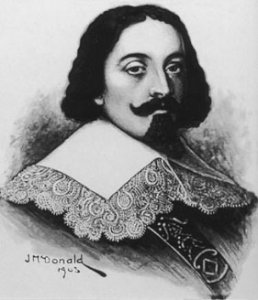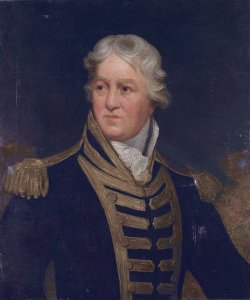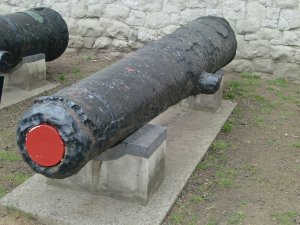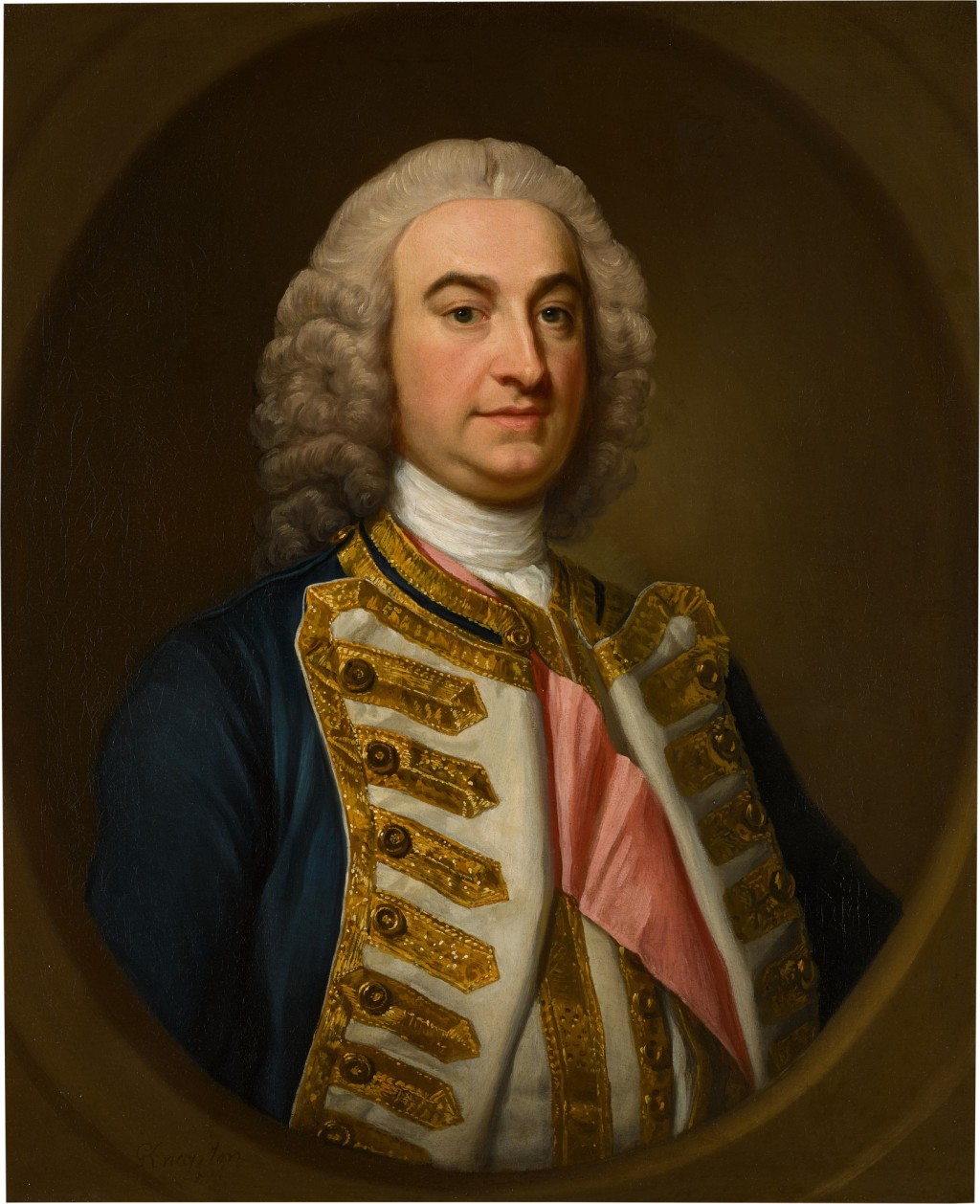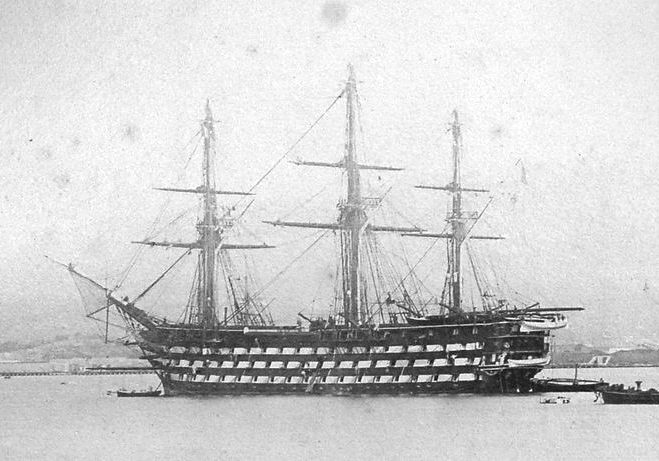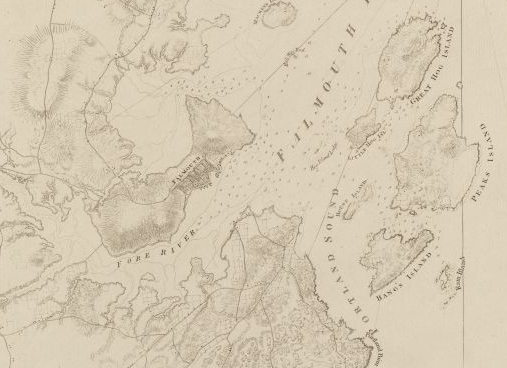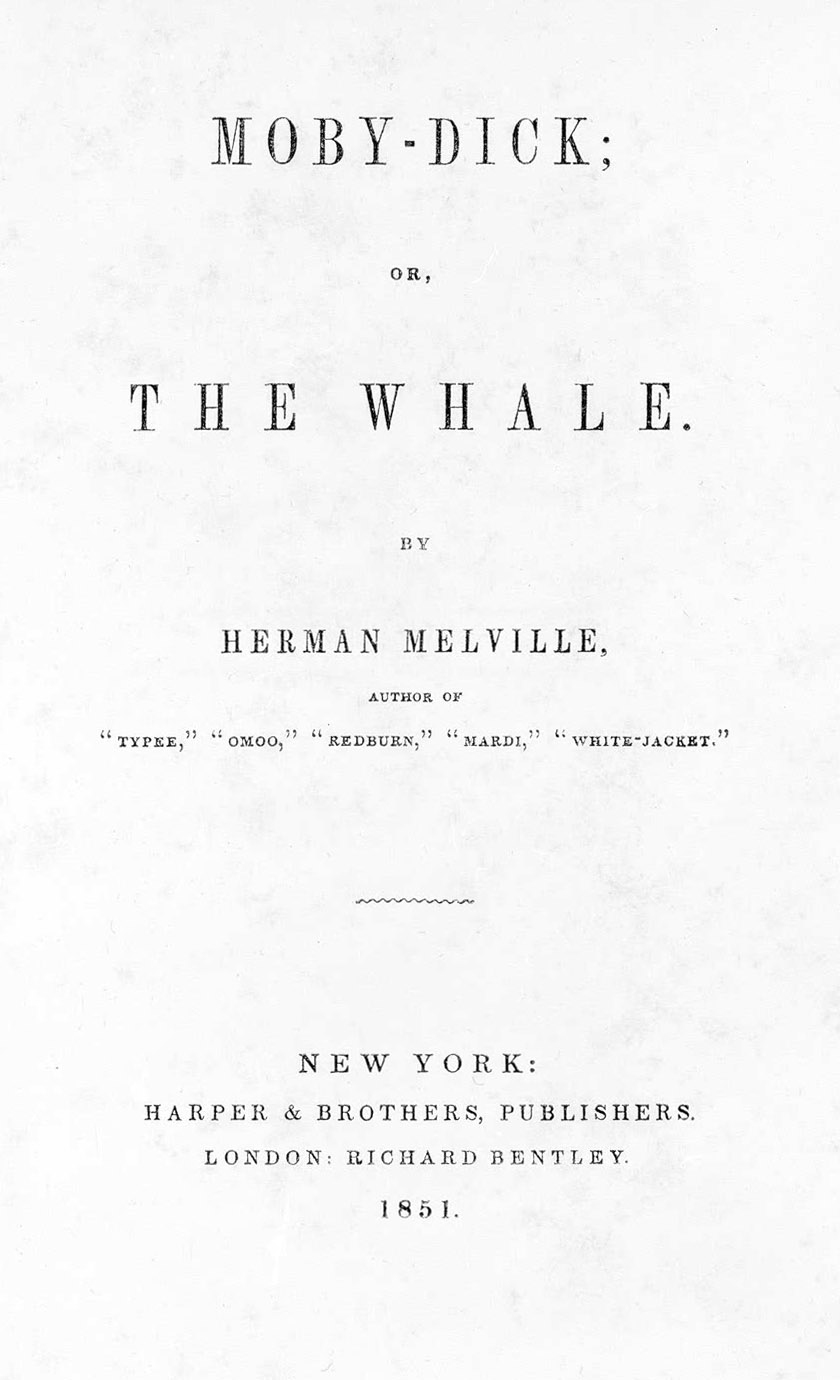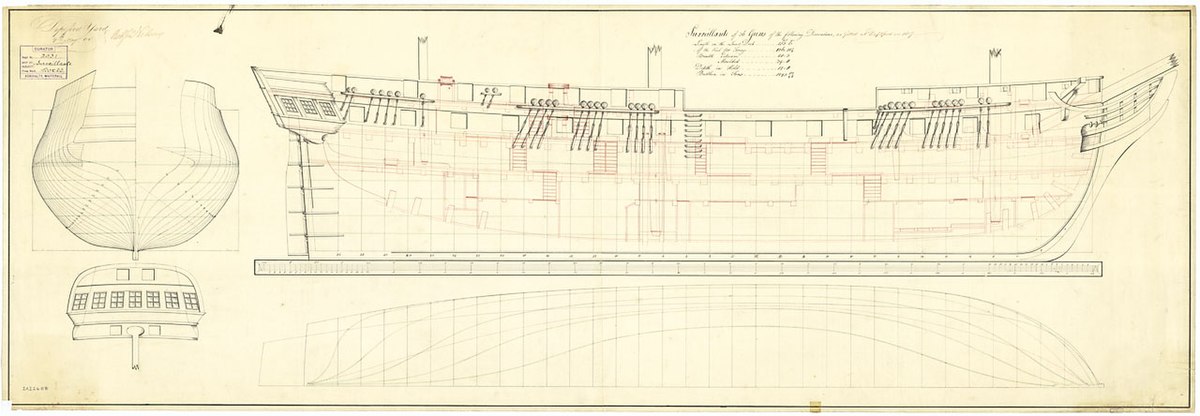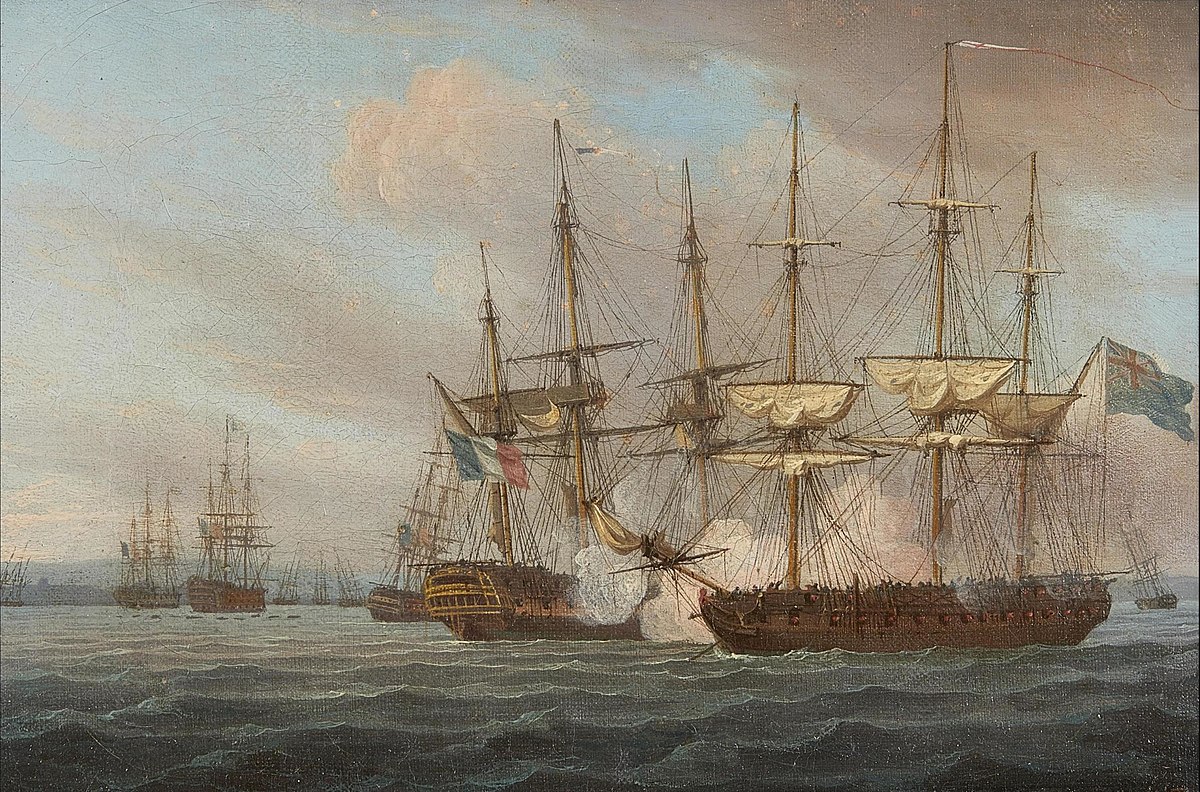Today in Naval History - Naval / Maritime Events in History
30th of September
some of the events you will find here,
please use the following link where you will find more details and all other events of this day .....
1652 – English ship Antelope wrecked off Jutland
The Antelope was a 56-gun great frigate of the navy of the Commonwealth of England, launched at Woolwich Dockyard in 1652. Notwithstanding the term "frigate", this was the largest of the warships ordered by the Commonwealth, and was eventually classed as a second rate.
1681 - Action of 30 September 1681 near Cape St Vincent - a victory for the Spanish over Brandenburg
The Action of 30 September 1681 was a 2-hour fight that took place on 30 September 1681 near Cape St Vincent, and was a victory for the Spanish over Brandenburg, which suffered 10 dead and 30 wounded.

1757 – Launch of HMS Actaeon, a 28-gun Coventry-class sixth-rate frigate
HMS Actaeon was a 28-gun Coventry-class sixth-rate frigate of the Royal Navy. Her crewing complement was 200 and, when fully equipped, she was armed with 24 nine-pounder cannons, supported by four three-pounders and twelve 1⁄2-pounder swivel guns.
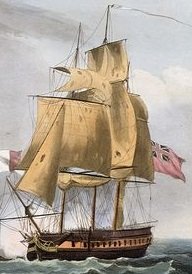
Actaeon was built to the same design as HMS Carysfort, (pictured)
1780 - HMS Pearl (32), Cptn George Montagu, took French frigate Esperance (28) off Bermuda.
The Action of 30 September 1780 was a minor naval engagement off the Bermudas, where HMS Pearl captured the L'Espérance, a French frigate of 32 guns launched in 1779.

1785 – Launch of HMS Circe, a 28 gun Enterprise-class frigate
HMS Circe was a 28-gun Enterprise-class sixth-rate frigate of the Royal Navy. She was launched in 1785 but not completed or commissioned until 1790. She then served in the English Channel on the blockade of French ports before she was wrecked in 1803.

1787 - Robert Gray on Lady Washington and Captain John Kendrick ob the Columbia left Boston, to trade along the north Pacific coast.
On September 30, 1787, Robert Gray and Captain John Kendrick left Boston, to trade along the north Pacific coast. Captain Gray commanded Lady Washington and Captain Kendrick commanded Columbia Rediviva. They were sent by Boston merchants including Charles Bulfinch. Bulfinch and the other financial backers came up with the idea of trading pelts from the northwest coast of North America and taking them directly to China after Bulfinch had read about Captain Cook’ssuccess doing the same. Bulfinch had read Cook’s Journals, published in 1784, that in part discussed his success selling sea otter pelts in Canton, thus the American merchants thought they could copy that success. Prior to this, other America traders, such as Robert Morris, had sent ships to trade with China, notably the Empress of China in 1784, but had had trouble finding goods for which the Chinese would trade. Bulfinch’s learning of Cook's pelt-trading solved this problem, so New England sea merchants could trade with China profitably. Gray might have been the first American to visit the Northwest Coast, but Simon Metcalfe of the Eleanora may have arrived earlier—perhaps as much as a year earlier.

original description: The replic tall ship, Lady Washington, under sail in Commencement Bay near Tacoma, Washington.
1909 – The Cunard Line’s RMS Mauretania makes a record-breaking westbound crossing of the Atlantic, that will not be bettered for 20 years.
RMS Mauretania was an ocean liner designed by Leonard Peskett and built by Wigham Richardson and Swan Hunter for the British Cunard Line, launched on the afternoon of 20 September 1906. She was the world's largest ship until the completion of RMS Olympic in 1911. Mauretania became a favourite among her passengers. She captured the Eastbound Blue Riband on her maiden return voyage in December 1907, then claimed the Westbound Blue Riband for the fastest transatlantic crossing during her 1909 season. She held both speed records for 20 years.

1909 – Launch of HMS Neptune was a dreadnought battleship
HMS Neptune was a dreadnought battleship built for the Royal Navy in the first decade of the 20th century, the sole ship of her class. She was the first British battleship to be built with superfiring guns. Shortly after her completion in 1911, she carried out trials of an experimental fire-control director and then became the flagship of the Home Fleet. Neptune became a private ship in early 1914 and was assigned to the 1st Battle Squadron.

1954 – The U.S. Navy submarine USS Nautilus is commissioned as the world's first nuclear-powered vessel.
USS Nautilus (SSN-571) was the world's first operational nuclear-powered submarine and the first submarine to complete a submerged transit of the North Pole on 3 August 1958.

1975 – Launch of Russian aircraft carrier Minsk
Minsk is an aircraft carrier that served the Soviet Navy, and later the Russian Navy, from 1978 to 1994. She was the second Kiev-class vessel to be built.
From 2000 to 2016 it has been a theme park known as Minsk World in Shatoujiao, Yantian, Shenzhen, China.
In April 2016, Minsk aircraft carrier was towed to Jiangsu for exhibition

An aerial port beam view of the Soviet Kiev class aircraft carrier Minsk underway.
30th of September
some of the events you will find here,
please use the following link where you will find more details and all other events of this day .....
Naval/Maritime History - 27th of August - Today in Naval History - Naval / Maritime Events in History
Today in Naval History - Naval / Maritime Events in History 28 September 1768 - Launch of HMS Prudent, a Exeter-class Ship of the Line HMS Prudent was a 64-gun third rate ship of the line of the Royal Navy, launched on 28 September 1768 at Woolwich. Scale: 1:48. Plan showing the body plan...
shipsofscale.com
1652 – English ship Antelope wrecked off Jutland
The Antelope was a 56-gun great frigate of the navy of the Commonwealth of England, launched at Woolwich Dockyard in 1652. Notwithstanding the term "frigate", this was the largest of the warships ordered by the Commonwealth, and was eventually classed as a second rate.
1681 - Action of 30 September 1681 near Cape St Vincent - a victory for the Spanish over Brandenburg
The Action of 30 September 1681 was a 2-hour fight that took place on 30 September 1681 near Cape St Vincent, and was a victory for the Spanish over Brandenburg, which suffered 10 dead and 30 wounded.
1757 – Launch of HMS Actaeon, a 28-gun Coventry-class sixth-rate frigate
HMS Actaeon was a 28-gun Coventry-class sixth-rate frigate of the Royal Navy. Her crewing complement was 200 and, when fully equipped, she was armed with 24 nine-pounder cannons, supported by four three-pounders and twelve 1⁄2-pounder swivel guns.

Actaeon was built to the same design as HMS Carysfort, (pictured)
1780 - HMS Pearl (32), Cptn George Montagu, took French frigate Esperance (28) off Bermuda.
The Action of 30 September 1780 was a minor naval engagement off the Bermudas, where HMS Pearl captured the L'Espérance, a French frigate of 32 guns launched in 1779.
1785 – Launch of HMS Circe, a 28 gun Enterprise-class frigate
HMS Circe was a 28-gun Enterprise-class sixth-rate frigate of the Royal Navy. She was launched in 1785 but not completed or commissioned until 1790. She then served in the English Channel on the blockade of French ports before she was wrecked in 1803.
1787 - Robert Gray on Lady Washington and Captain John Kendrick ob the Columbia left Boston, to trade along the north Pacific coast.
On September 30, 1787, Robert Gray and Captain John Kendrick left Boston, to trade along the north Pacific coast. Captain Gray commanded Lady Washington and Captain Kendrick commanded Columbia Rediviva. They were sent by Boston merchants including Charles Bulfinch. Bulfinch and the other financial backers came up with the idea of trading pelts from the northwest coast of North America and taking them directly to China after Bulfinch had read about Captain Cook’ssuccess doing the same. Bulfinch had read Cook’s Journals, published in 1784, that in part discussed his success selling sea otter pelts in Canton, thus the American merchants thought they could copy that success. Prior to this, other America traders, such as Robert Morris, had sent ships to trade with China, notably the Empress of China in 1784, but had had trouble finding goods for which the Chinese would trade. Bulfinch’s learning of Cook's pelt-trading solved this problem, so New England sea merchants could trade with China profitably. Gray might have been the first American to visit the Northwest Coast, but Simon Metcalfe of the Eleanora may have arrived earlier—perhaps as much as a year earlier.
original description: The replic tall ship, Lady Washington, under sail in Commencement Bay near Tacoma, Washington.
1909 – The Cunard Line’s RMS Mauretania makes a record-breaking westbound crossing of the Atlantic, that will not be bettered for 20 years.
RMS Mauretania was an ocean liner designed by Leonard Peskett and built by Wigham Richardson and Swan Hunter for the British Cunard Line, launched on the afternoon of 20 September 1906. She was the world's largest ship until the completion of RMS Olympic in 1911. Mauretania became a favourite among her passengers. She captured the Eastbound Blue Riband on her maiden return voyage in December 1907, then claimed the Westbound Blue Riband for the fastest transatlantic crossing during her 1909 season. She held both speed records for 20 years.
1909 – Launch of HMS Neptune was a dreadnought battleship
HMS Neptune was a dreadnought battleship built for the Royal Navy in the first decade of the 20th century, the sole ship of her class. She was the first British battleship to be built with superfiring guns. Shortly after her completion in 1911, she carried out trials of an experimental fire-control director and then became the flagship of the Home Fleet. Neptune became a private ship in early 1914 and was assigned to the 1st Battle Squadron.
1954 – The U.S. Navy submarine USS Nautilus is commissioned as the world's first nuclear-powered vessel.
USS Nautilus (SSN-571) was the world's first operational nuclear-powered submarine and the first submarine to complete a submerged transit of the North Pole on 3 August 1958.
1975 – Launch of Russian aircraft carrier Minsk
Minsk is an aircraft carrier that served the Soviet Navy, and later the Russian Navy, from 1978 to 1994. She was the second Kiev-class vessel to be built.
From 2000 to 2016 it has been a theme park known as Minsk World in Shatoujiao, Yantian, Shenzhen, China.
In April 2016, Minsk aircraft carrier was towed to Jiangsu for exhibition
An aerial port beam view of the Soviet Kiev class aircraft carrier Minsk underway.





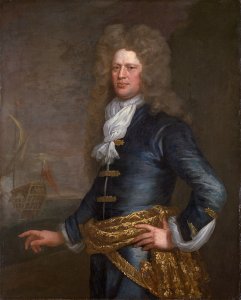
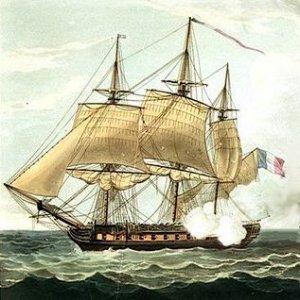

 mentioned the discovery of an 85-foot schooner on the bottom of Lake Erie, which may be Caledonia.
mentioned the discovery of an 85-foot schooner on the bottom of Lake Erie, which may be Caledonia.